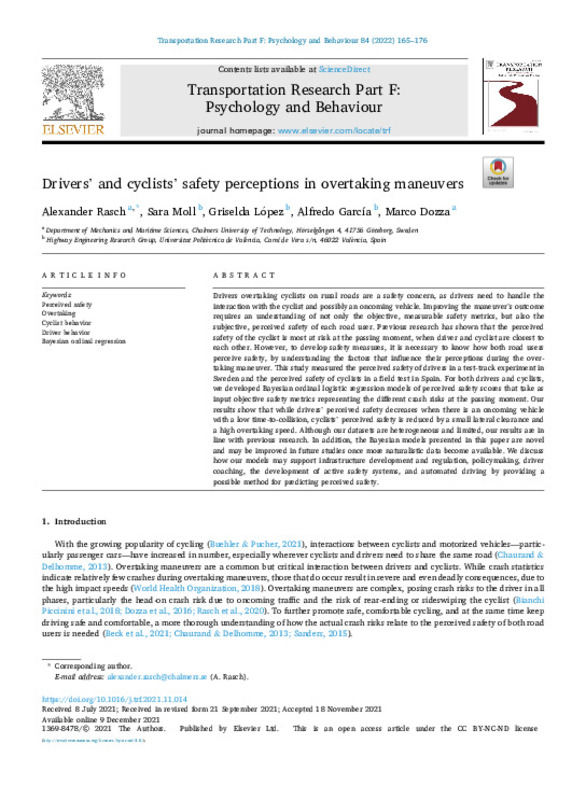JavaScript is disabled for your browser. Some features of this site may not work without it.
Buscar en RiuNet
Listar
Mi cuenta
Estadísticas
Ayuda RiuNet
Admin. UPV
Drivers' and cyclists' safety perceptions in overtaking maneuvers
Mostrar el registro completo del ítem
Rasch, A.; Moll Montaner, S.; López-Maldonado, G.; García García, A.; Dozza, M. (2022). Drivers' and cyclists' safety perceptions in overtaking maneuvers. Transportation Research Part F Traffic Psychology and Behaviour. 84:165-176. https://doi.org/10.1016/j.trf.2021.11.014
Por favor, use este identificador para citar o enlazar este ítem: http://hdl.handle.net/10251/190200
Ficheros en el ítem
Metadatos del ítem
| Título: | Drivers' and cyclists' safety perceptions in overtaking maneuvers | |
| Autor: | Rasch, Alexander Dozza, Marco | |
| Entidad UPV: |
|
|
| Fecha difusión: |
|
|
| Resumen: |
[EN] Drivers overtaking cyclists on rural roads are a safety concern, as drivers need to handle the interaction with the cyclist and possibly an oncoming vehicle. Improving the maneuver¿s outcome requires an understanding ...[+]
|
|
| Palabras clave: |
|
|
| Derechos de uso: | Reconocimiento - No comercial - Sin obra derivada (by-nc-nd) | |
| Fuente: |
|
|
| DOI: |
|
|
| Editorial: |
|
|
| Versión del editor: | https://doi.org/10.1016/j.trf.2021.11.014 | |
| Código del Proyecto: |
|
|
| Agradecimientos: |
The test-track data collection was carried out in collaboration with the project Drivers in Interaction with Vulnerable Road Users (DIV) , funded by Toyota Motor Europe, Autoliv, and Veoneer.
The field-test data collection ...[+]
|
|
| Tipo: |
|









